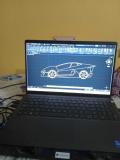Statics, Trigonometry, Probability, Number System, Series, Arithmetic Progression ,Geometric Progression etc
1. Statics
- Usually relates to physics, focusing on forces in equilibrium.
- In mathematics, it might refer to static equations or principles in mechanics, involving calculating forces, moments, and equilibria.
2. Trigonometry
- Studies relationships involving angles and lengths in triangles.
- Key concepts: sine, cosine, tangent, their ratios, identities, and applications in solving triangles, waves, and oscillations.
3. Probability
- Concerns the likelihood of events occurring.
- Basic concepts include experiments, outcomes, events, probability formulas, independent and dependent events, and probability distributions.
4. Number System
- Foundation of mathematics dealing with different types of numbers: natural, whole, integers, rational, irrational, real, and complex numbers.
- Operations, properties, and number representations (like decimal, fractions, and surds).
5. Series
- Sequences of numbers following a pattern that can be expressed using formulas.
- Applications include calculating sums of sequences, often used in algebra and calculus.
6. Arithmetic Progression (AP)
- A sequence where each term is obtained by adding a fixed number (common difference) to the previous term.
- Formulae: an=a+(n−1)dan=a+(n−1)d and sum of n terms: Sn=n2(2a+(n−1)d)Sn=2n(2a+(n−1)d).
7. Geometric Progression (GP)
- A sequence where each term is obtained by multiplying the previous term by a fixed ratio.
- Formulae: an=arn−1an=arn−1 and sum of n terms: Sn=arn−1r−1Sn=ar−1rn−1 (for r≠1r=1).






